Addiction specialists and other health professionals have a range of medication-based options for helping people affected by alcoholism. However, even when they receive one of these medications, some recovering alcoholics still lapse back into heavy alcohol consumption. In a study published in April 2014 in the journal Alcoholism: Clinical & Experimental Research, researchers from three German institutions assessed the effectiveness of individualized psychotherapy in recovering alcoholics who don’t respond sufficiently to medication-based treatment. Specifically, the researchers examined the usefulness of a form of individualized therapy called cognitive behavioral therapy.
What Medications Can Help Alcoholics?
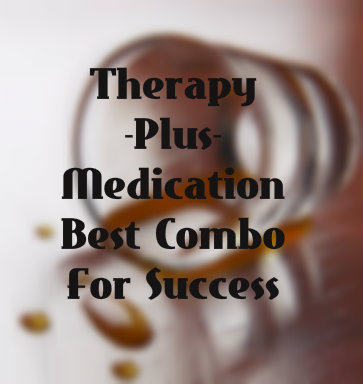 As of 2014, the U.S. Food and Drug Administration has approved a trio of medications for use in people recovering from alcoholism: naltrexone (Vivitrol), disulfiram (Antabuse) and acamprosate (Campral). Naltrexone is an anti-opioid medication that also blocks the chemical reactions responsible for triggering pleasurable sensations and alcohol cravings in drinkers. Disulfiram deters alcohol consumption by exaggerating the unpleasant chemical reactions associated with the breakdown of alcohol inside the body. Acamprosate makes chemical changes inside the brain that typically lessen the intensity of the alcohol withdrawal symptoms that commonly contribute to relapse risks in recovering alcoholics. Doctors also sometimes use a fourth medication, called topiramate (Topamax), not initially intended for use in alcoholism treatment. This anti-seizure compound also makes changes in the brain’s chemical environment that can help lower the odds that recovering alcoholics will take a drink.
As of 2014, the U.S. Food and Drug Administration has approved a trio of medications for use in people recovering from alcoholism: naltrexone (Vivitrol), disulfiram (Antabuse) and acamprosate (Campral). Naltrexone is an anti-opioid medication that also blocks the chemical reactions responsible for triggering pleasurable sensations and alcohol cravings in drinkers. Disulfiram deters alcohol consumption by exaggerating the unpleasant chemical reactions associated with the breakdown of alcohol inside the body. Acamprosate makes chemical changes inside the brain that typically lessen the intensity of the alcohol withdrawal symptoms that commonly contribute to relapse risks in recovering alcoholics. Doctors also sometimes use a fourth medication, called topiramate (Topamax), not initially intended for use in alcoholism treatment. This anti-seizure compound also makes changes in the brain’s chemical environment that can help lower the odds that recovering alcoholics will take a drink.
Cognitive Behavioral Therapy
Practitioners of cognitive behavioral therapy (CBT) help their patients/clients identify the underlying feelings, perceptions and actions that contribute to dysfunctional behavior in stressful situations. After making this identification, the individual can gradually learn a new set of feelings, perceptions and actions that don’t help trigger destructive behaviors. In the context of addiction treatment, CBT practitioners specifically help their patients/clients learn to do such things as anticipate the situations likely to increase the urge to use drugs or alcohol, learn how to cope with those situations without using drugs or alcohol, identify substance-using urges as soon as possible and accurately weigh the pros and cons of using drugs or alcohol.
Cognitive behavioral therapy is suitable for use in both individualized and group formats. In addition, the therapy can be used on its own or in combination with medication-based addiction treatment. In addition to alcoholism, forms of addiction addressed by CBT include addiction to the stimulants methamphetamine and cocaine, marijuana addiction and addiction to the nicotine contained in cigarettes and other tobacco products.
Usefulness In People Not Helped By Medication
In the study published in Alcoholism: Clinical & Experimental Research, researchers from Germany’s Freiberg University, Tubingen University and Heidelberg University used an examination of 109 individuals to assess the effectiveness of an individualized cognitive behavioral approach in helping recovering alcoholics who don’t receive enough benefit from medication-based treatment. All of these individuals were alcohol program participants who had experienced severe relapses back into drinking after taking an alcoholism medication, or after receiving a placebo that mimicked the appearance of an alcoholism medication. During the study, half of the participants continued to receive a standard combination of medication and medical symptom management. The other half received a combination of medication, medical symptom management and cognitive behavioral therapy conducted on an individualized basis.
The researchers analyzed the effectiveness of individualized CBT in all of the participants originally assigned to the therapy group, as well as the effectiveness of the approach in all of the participants who actively engaged in therapy. After completing these analyses, they concluded that the recovering alcoholics who actively engaged in the CBT process received a substantial benefit from the therapy and experienced improved treatment outcomes when compared to the recovering alcoholics who received only medication and medical symptom management.
The chief measurement used to compare the effectiveness of the combination of medication and individualized cognitive behavioral therapy to the effectiveness of medication without CBT was the number of days recovering alcoholics could successfully avoid experiencing another severe relapse. The authors of the study published in Alcoholism: Clinical & Experimental Research concluded that those program participants who actively embrace the goals of individualized CBT can potentially increase the number of days between relapses if they combine the therapy with an alcoholism medication. In line with this conclusion, they believe that alcohol programs may see significant improvements in their patients’/clients’ relapse-related outcomes if they offer access to non-medication-based therapy early in the treatment process.
Read How Do Recovering Alcoholics Respond To Baclofen?
American attitudes toward drugs and drug users are changing. A few decades ago Americans wanted stiff mandatory sentencing for drug users and dealers. This has led to crowded prisons, strained state budgets and little headway in terms of changing drug behavior. A recent poll revealed that two-thirds of Americans are in favor of drug treatment rather than criminal prosecution.
Jail Or Rehab?
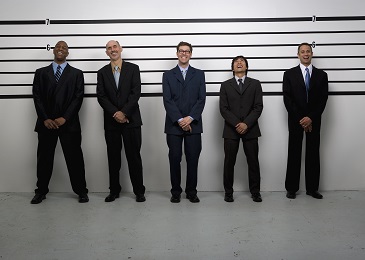 The Pew Research Center has polled the country on this subject and says that Americans would rather see offenders with no history of violence get help as opposed to jail time. Pew talked to 1,821 U.S. adults, finding that 67 percent felt the emphasis should shift toward treatment, just over 26 percent advocated for a continued focus on punishment and seven percent said they could not decide on which course was best. The poll was conducted for one week in February 2014.
The Pew Research Center has polled the country on this subject and says that Americans would rather see offenders with no history of violence get help as opposed to jail time. Pew talked to 1,821 U.S. adults, finding that 67 percent felt the emphasis should shift toward treatment, just over 26 percent advocated for a continued focus on punishment and seven percent said they could not decide on which course was best. The poll was conducted for one week in February 2014.
The two-thirds majority felt mandatory sentencing should not be applied to small scale crime, especially if it was marijuana-related. This is a significant shift in public opinion since as recently as 2001 more than half of polled Americans still supported strong penalties and prison sentencing for drug offenses, including marijuana.
The President and his administration have been lending voice to the move away from harsh mandatory sentencing. Prosecutors show less support for the idea, but so far President Obama has enjoyed Congressional support from both sides of the aisle when he suggests eliminating most mandatory sentences.
Marijuana Legalization
The poll discovered that 49 percent support the legalization of medical marijuana use, and 39 percent support legalizing recreational use. Just 16 percent maintain that marijuana should continue as an illegal substance in this country. But nearly all those polled, on both sides of the issue, expressed the belief that marijuana will eventually become a legal substance in America.
This is a notable change in public sentiment. Back in 2010 Pew reported that 41 percent supported legalization, while a majority – 52 percent – still thought the drug should be illegal. The new poll is essentially a flip of prior attitudes. At the moment medical marijuana use is legal in 20 states and recreational use is legal in two.
The prevailing attitude among Americans seems to be that a person should be free to use marijuana as long as they do it in the privacy of their own home. Even though they favor loosening the laws surrounding marijuana use, Pew reported that 63 percent did not want people to use it in public, and 44 percent did not want to have a dealer present on the street where they live.
Americans appear ready to give up on the fight against marijuana, but they still have some misgivings. Many are concerned that when marijuana is more available more young people will be likely to give it a try. And even though the country is moving away from sending drug sellers and users to prison, they still think drugs are an issue. Over 50 percent of those polled said they thought drug abuse was a “serious problem,” and just over 30 percent said drug abuse is a “crisis.”
From the White House to ordinary households, the feeling in America seems to be “let’s put small scale drug users into treatment, rather than prison.” On the one hand Americans are ready to allow fellow citizens free access to marijuana, but at the same time they worry about where that policy may lead. The majority of Americans seem to feel that fear of punishment has not been effective in reducing drug abuse and are ready to try a new approach.
Topiramate (Topamax) is a prescription medication originally developed as a treatment for certain seizure disorders. Doctors also sometimes prescribe this medication to people affected by other serious health issues, including alcohol addiction. In a study published in May 2014 in the journal Drug and Alcohol Dependence, researchers from two Dutch institutions explored the potential usefulness of topiramate as a treatment for people addicted to crack cocaine. These researchers found that only a small subset of individuals addicted to this form of cocaine clearly benefit from topiramate use.
How Does Topiramate Work?
Specific seizure disorders treated with topiramate include Lennox-Gastaut syndrome and certain forms of epilepsy. The medication helps people affected by these conditions by easing excessive nerve activity inside the brain. This same effect on brain function can also help stop migraine headaches from occurring.
When given to people affected by alcoholism, topiramate can diminish the severity of some of the symptoms associated with alcohol withdrawal, and can thereby help reduce the likelihood that a recovering alcoholic will lapse back into active drinking. Doctors may also prescribe the medication to people affected by medically serious forms of obesity. Available forms of topiramate include tablets and specially designed granules that users can release from a capsule and mix with food.
Topiramate And Cocaine Addiction
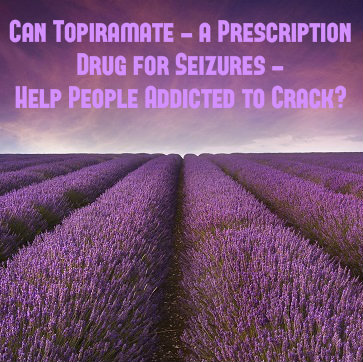 There is no medication in doctors’ treatment arsenals approved to help people affected by cocaine addiction. Instead, successful treatment typically depends on a form of behavior modification therapy called cognitive behavioral therapy or on other non-medication-based therapeutic options. Addiction researchers are actively looking for new medications that could help people addicted to cocaine, as well as existing medications that could be adapted for use in cocaine addiction treatment.
There is no medication in doctors’ treatment arsenals approved to help people affected by cocaine addiction. Instead, successful treatment typically depends on a form of behavior modification therapy called cognitive behavioral therapy or on other non-medication-based therapeutic options. Addiction researchers are actively looking for new medications that could help people addicted to cocaine, as well as existing medications that could be adapted for use in cocaine addiction treatment.
In a study published in October 2013 in the American Medical Association journal JAMA Psychiatry, a multi-university research team studied the effects of topiramate on 71 adults impacted by cocaine addiction. These researchers concluded that, compared to recovering addicts who don’t receive the medication while undergoing cognitive behavioral therapy, those who receive both topiramate and cognitive behavioral therapy experience improvements that include longer periods of cocaine abstinence (verified by an increased number of cocaine-free urine drug tests) and a reduced craving for further cocaine intake.
Potential Usefulness Of Topiramate In Crack Cocaine Treatment
Crack cocaine is powdered cocaine that has undergone an additional step of chemical processing. While the two forms of the drug have the same basic brain effects, crack only produces these effects for a relatively brief amount of time. This means that users of this form of cocaine may take the drug more frequently, and therefore may have greater odds of eventually experiencing the long-term brain changes associated with cocaine addiction.
In the study published in Drug and Alcohol Dependence, researchers from Parnassia Addiction Research Centre and the University of Amsterdam specifically investigated the potential usefulness of topiramate treatment in people addicted to crack cocaine. Thirty-seven participants in the study received a 12-week combination of topiramate and cognitive behavioral therapy, while another thirty-seven participants only received cognitive behavioral therapy.
The researchers mainly measured the effectiveness of topiramate treatment by comparing the rate of continued program involvement among recipients of the medication to the rate of continued involvement among those who did not receive the medication.
Variance Factors In Topiramate Use
In addition, they assessed such things as the regularity with which participants took their prescribed topiramate, the presence of negative side effects in the topiramate users, the ability to avoid using cocaine or other substances, the ability of medication users to interact in socially appropriate ways and the level of satisfaction that the topiramate recipients expressed toward use of the medication.
After completing their assessments, the researchers found that topiramate didn’t produce any serious side effects in the study participants. However, they also found that most of the medication recipients did not take it on a regular basis. In addition, they concluded that use of topiramate neither increased the length of involvement in cocaine addiction treatment nor generally contributed to a reduction in the consumption of cocaine or any other substance.
Critically, one group affected by crack cocaine addiction did benefit from topiramate use: those individuals simultaneously impacted by an addiction to opioid drugs or medications. This subset of addicts significantly lowered their cocaine intake while taking topiramate.
Importance Of Consistency Of Topiramate Use
The authors of the study published in Drug and Alcohol Dependence link the low level of topiramate effectiveness in crack cocaine addicts to highly inconsistent intake of the medication. Because many people in treatment don’t maintain their medication routines, the authors believe that topiramate may only play a relatively minor role in addressing the effects of crack cocaine addiction.
If you or a loved one is struggling with cocaine or any other addiction, call us now! We are here to help you!
Read More About The Addiction Treatment Uses For Topiramate
12 May 2014
Is Addiction Coverage Really Equal?
In recent years, two federal laws have guaranteed fair and equal coverage for mental health and addiction treatment. Those working in the field of addiction care are not so sure that the intent of those laws is really playing out in reality. People struggling with substance use disorders may not be getting the insurance coverage they need in order to get well.
The Federal Laws
In 2008, President Bush signed the Mental Health Parity and Addiction Equity Act. The law is supposed to ensure that health insurance plans are no more restrictive when it comes to mental health or addiction care than they are with other types of medical care. In other words, deductibles, co-pays and limits on treatment cannot be greater for mental health or addiction than anything else in the plan. The law does not require that plans cover these types of care at all.
President Obama’s Affordable Care Act added to the previous law by listing mental health and addiction treatment as essential benefits that must be covered by all health insurance plans, including those offered by small businesses and those for individuals. Prior to this law, most large company group plans included such coverage, but smaller plans often did not.
Equal Coverage Not So Equal
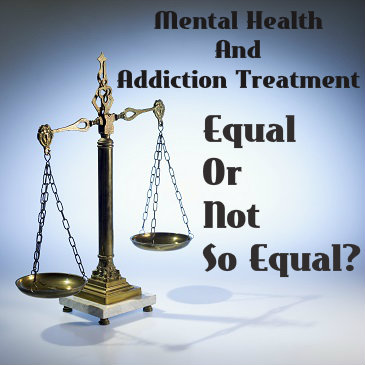 The two laws signed by Presidents Bush and Obama were intended to make sure that people needing care for mental health issues or for addiction would get the treatment they need. One of the biggest barriers to getting treatment has always been cost. If an insurance plan does not cover treatment, or if the restrictions on treatment are significant, someone who needs help may not get it. Those who are in the field of treatment for addiction are finding that the laws’ intentions are not always playing out as intended.
The two laws signed by Presidents Bush and Obama were intended to make sure that people needing care for mental health issues or for addiction would get the treatment they need. One of the biggest barriers to getting treatment has always been cost. If an insurance plan does not cover treatment, or if the restrictions on treatment are significant, someone who needs help may not get it. Those who are in the field of treatment for addiction are finding that the laws’ intentions are not always playing out as intended.
The National Association of Addiction Treatment Professionals conducts ongoing surveys and has reported that there are many denials of coverage for addiction care. Behind more than half of those denials is a debate over what is medically necessary. Unlike other medical conditions, like heart disease for instance, medical necessity for addiction is not always perfectly clear. The insurance plans need not cover care that is not deemed medically needed. Caregivers cite the changing laws as the reason insurers are getting tougher about what they will and will not cover.
One of the biggest battles over care for addicts is the number of days of coverage for residential stays. Many insurers want to cap the stay at a week or less, while addiction experts insist that patients need up to three months of treatment. Some insurers insist that treatment need not be inpatient care and that they will cover a few months of outpatient care. What is right for each patient, though, is highly individualized. Some may succeed with outpatient treatment, while others have nowhere safe to go and really need a long stay in a residential facility.
The changing laws regarding care for addiction and mental health represent an important societal shift in attitudes toward those struggling with these very real medical conditions. The shift is positive and the laws help, but there are still many bugs to work out. As insurers debate how to implement coverage that meets the requirements of the laws, addiction caregivers try to pick up the slack. It may take more time to ensure that everyone gets the help they need, but the changes so far are just not enough to reach everyone.
08 May 2014
Marijuana Withdrawal Eased By Sativex
Like people addicted to a range of other substances, people addicted to cannabis (marijuana, hashish or hashish oil) can develop symptoms of withdrawal when their brains don’t receive the expected amount of the drug. The presence of significant withdrawal symptoms can potentially stop a habitual cannabis user from successfully discontinuing his or her drug intake. In a study published in March 2014 in the American Medical Association journal JAMA Psychiatry, researchers from several Australian institutions investigated the potential effectiveness of a multiple sclerosis medication, called nabiximols (Sativex), as a treatment for people going through cannabis withdrawal. Nabiximols is derived from certain types of cannabis plants.
I Thought Marijuana Wasn’t Addictive?
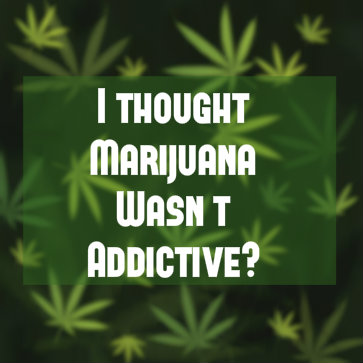 The American Psychiatric Association acknowledges cannabis withdrawal as a distinct and diagnosable mental health condition. People going through this form of drug withdrawal can develop symptoms that include a prominent urge to consume more cannabis, increased levels of anxiety, an unusually agitated or irritated mental state, a reduced ability to fall asleep or stay asleep and a reduced interest in food. As a rule, doctors consider officially diagnosing these symptoms when they substantially impair the day-to-day functionality of affected individuals or produce a notable decline in mental/emotional well-being. As of early 2014, there are no medications available in the U.S. designed to treat people affected by cannabis withdrawal.
The American Psychiatric Association acknowledges cannabis withdrawal as a distinct and diagnosable mental health condition. People going through this form of drug withdrawal can develop symptoms that include a prominent urge to consume more cannabis, increased levels of anxiety, an unusually agitated or irritated mental state, a reduced ability to fall asleep or stay asleep and a reduced interest in food. As a rule, doctors consider officially diagnosing these symptoms when they substantially impair the day-to-day functionality of affected individuals or produce a notable decline in mental/emotional well-being. As of early 2014, there are no medications available in the U.S. designed to treat people affected by cannabis withdrawal.
Nabiximols
Nabiximols is an oral spray chemically extracted from flowers harvested from a cannabis species known as Cannabis sativa. Rather than using plants grown through usual methods (which can have highly varying amounts of THC and other active ingredients), manufacturers of the medication use plants cloned in tightly controlled conditions. Compared to the THC derived from smoking cannabis, the THC contained in nabiximols produces its drug effects more slowly and also reaches a lower overall peak inside the bloodstream. Still, the medication has a fairly rapid impact and typically triggers noticeable effects in 15 to 40 minutes. Together, these properties make nabiximols a potential option for treating people affected by the autoimmune nerve disorder multiple sclerosis. As of 2014, the medication is not available in America; however, Canada and several European countries have approved its use. Currently, pharmaceutical companies are seeking approval for use of the medication in the U.S. as a treatment for certain forms of cancer-related pain.
Potential Effectiveness
In the study published in JAMA Psychiatry, researchers from the University of Sydney, the University of New South Wales and several other Australian institutions used a monthlong project to assess the effectiveness of nabiximols as a treatment for the symptoms of cannabis withdrawal in people affected by cannabis dependence/addiction. Half of the 51 participants in this project received the medication for six days; the other half received a placebo that mimicked the appearance of nabiximols for the same amount of time. Four weeks later, the researchers conducted a follow-up examination of each participant in both the nabiximols group and the placebo group. This examination included a test (called the Cannabis Withdrawal Scale) designed to measure the intensity of withdrawal symptoms, as well as assessments of such things as length of stay in a treatment program, involvement in cannabis use after going through withdrawal and experiences with cannabis-related harm.
After comparing the two groups, the researchers concluded that use of nabiximols does contribute substantially to the general reduction of withdrawal symptoms in physically dependent cannabis users. Specifically, the medication helps lower the intensity of cannabis cravings and ease the impact of the mood alteration commonly associated with cannabis withdrawal. In addition, nabiximols use has a smaller but detectable impact on the severity of several other withdrawal symptoms. Compared to the study participants who did not receive nabiximols, the participants who received the medication also stayed in treatment longer during the project’s initial phase.
The authors of the study published in JAMA Psychiatry note that nabiximols apparently only helps extend participation in cannabis treatment during its active use. Once that use came to an end, the individuals who received the medication did not stay in treatment any longer than the individuals who received a placebo. All told, the study’s authors believe that their findings support the potential usefulness of the medication as a cannabis withdrawal treatment and point toward a need for additional research.
There are currently no fully proven medication-based options available to help people addicted to cocaine recover in treatment programs. Researchers and doctors have devoted a considerable amount of time to addressing this lack by either searching for new options or adapting existing medications to treat cocaine addiction. In a study published in April 2014 in The Journal of Neuroscience, researchers from three U.S. institutions explored the potential role of a medication called baclofen (usually prescribed to ease certain forms of severe muscle spasming) in helping recovering cocaine addicts avoid experiencing a drug relapse.
Can Medication Help Cocaine Addiction?
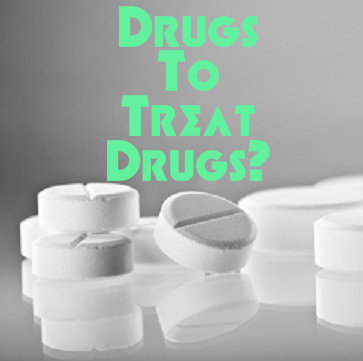 Researchers across the U.S. are investigating the potential usefulness of a number of existing medications as treatments for people affected by cocaine addiction. Medications currently being studied directly in human beings include disulfiram (Antabuse), normally used in alcoholism treatment; modafinil (Provigil), typically used in the treatment of sleep apnea or narcolepsy; and topiramate (Topamax), normally used to control seizure activity and previously adapted for alcoholism treatment. The National Institute on Drug Abuse (NIDA) reports that the most consistent positive results have come from disulfiram. In addition to these adapted medications, some researchers are exploring the possibility of developing a cocaine vaccine that could prevent the drug from producing its characteristic mind-altering effects.
Researchers across the U.S. are investigating the potential usefulness of a number of existing medications as treatments for people affected by cocaine addiction. Medications currently being studied directly in human beings include disulfiram (Antabuse), normally used in alcoholism treatment; modafinil (Provigil), typically used in the treatment of sleep apnea or narcolepsy; and topiramate (Topamax), normally used to control seizure activity and previously adapted for alcoholism treatment. The National Institute on Drug Abuse (NIDA) reports that the most consistent positive results have come from disulfiram. In addition to these adapted medications, some researchers are exploring the possibility of developing a cocaine vaccine that could prevent the drug from producing its characteristic mind-altering effects.
In the absence of proven medications, most cocaine treatment programs rely on behavioral therapies that achieve their beneficial effects by helping recovering addicts change the ways in which they think and react in the presence of internal and external cues associated with drug use. Common options here include cognitive behavioral therapy (CBT) and contingency management. In CBT, people recovering from cocaine addiction learn to identify the thoughts and emotions that support drug use, then go on to learn how to replace those thoughts and emotions with alternatives that don’t support the urge to use cocaine. Contingency management promotes basic program compliance and goal setting by financially or materially rewarding recovering addicts for following program rules and reaching important treatment milestones.
What Is Baclofen?
Baclofen is a chemical relative of a substance that occurs naturally inside the brain. In the treatment of severe muscle spasms, it produces its beneficial effects by slowing down the rate of nerve cell activity in the spinal cord (which, along with the brain, forms the central nervous system). Specific ailments improved by this slowdown include multiple sclerosis and certain spinal cord problems that trigger contractions in the body’s skeletal muscles. Baclofen is widely available as a generic, unbranded medication and comes in tablet form.
Usefulness In Preventing Relapses
Current scientific evidence indicates that, even after extended periods of drug-free living, a recovering cocaine addict can experience chemical reactions in the brain that trigger drug cravings in the presence of internal or external cues previously associated with drug intake. In the face of these cravings, many people in recovery relapse back into drug use. In the study published in The Journal of Neuroscience, researchers from the University of Pennsylvania, Wake Forest University and the Veterans Administration explored the usefulness of baclofen in preventing the chemical changes in the brain that support cravings and relapse. During the study, 23 men addicted to cocaine received either doses of baclofen or a placebo designed to mimic the medication’s appearance. These men ranged in age from 18 to 55.
One week into the study, the researchers used modern scanning technology to examine the participants’ real-time changes in brain function while they viewed cocaine-related imagery at a pace too rapid to register in conscious awareness. Effectively, these rapidly presented images recreated the types of subliminal drug cues that can trigger drug intake in both active users and recovering addicts. When they compared the brain reactions of the baclofen users to the reactions of other study participants, researchers found that the baclofen users showed a substantially lower level of activity in the brain areas responsible for triggering pleasurable sensations and increasing motivation. Normally, increased activity in these areas helps drive the urge to use more drugs.
Based on their findings, the authors of the study published in The Journal of Neuroscience believe that baclofen can help block the subliminal drug-using cues that support the onset of relapse in people recovering from cocaine addiction. However, their work did not include clinical testing of the medication’s ability to prevent drug cravings and relapse in real-world conditions. They point toward a need for further research to investigate baclofen’s effectiveness in such conditions.
Find Out How Alcoholics Respond To Baclofen
Significant numbers of the people who commit crimes in America are affected by clinically diagnosable symptoms of substance abuse or substance addiction. Current evidence indicates that successful treatment of these individuals’ substance-related issues substantially reduces the chances that they will commit additional crimes in the future. According to results reported by the National Institute on Drug Abuse, successful treatment of criminal offenders with substance-related issues also carries a lower financial burden for society than the reincarceration of those individuals who continue their involvement in illegal activity.
Drug Abuse And Jail Time
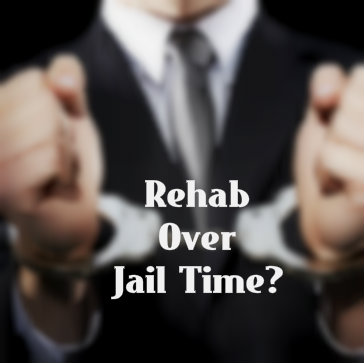 The close connection between substance problems and the chances of ending up in jail or prison is well documented. For example, figures compiled by the National Institute on Drug Abuse indicate that roughly 50 percent to 66 percent of the people incarcerated in a state jail or prison, or in a federal facility, have symptoms that could qualify them for an official diagnosis of alcohol use disorder (alcohol abuse or alcoholism). In addition, figures compiled for the year 2012 by the Substance Abuse and Mental Health Services Administration indicate that just over 25 percent of U.S. adults recently paroled from prison or under supervised prison release currently abuse either marijuana or some sort of prescription medication. Furthermore, well over a quarter (30.2 percent) of all U.S. adults who receive probation for criminal activity abuse marijuana or a prescription medication.
The close connection between substance problems and the chances of ending up in jail or prison is well documented. For example, figures compiled by the National Institute on Drug Abuse indicate that roughly 50 percent to 66 percent of the people incarcerated in a state jail or prison, or in a federal facility, have symptoms that could qualify them for an official diagnosis of alcohol use disorder (alcohol abuse or alcoholism). In addition, figures compiled for the year 2012 by the Substance Abuse and Mental Health Services Administration indicate that just over 25 percent of U.S. adults recently paroled from prison or under supervised prison release currently abuse either marijuana or some sort of prescription medication. Furthermore, well over a quarter (30.2 percent) of all U.S. adults who receive probation for criminal activity abuse marijuana or a prescription medication.
Medical Benefits Of Addiction Treatment
More than four out of five people in jail or prison with diagnosable substance problems don’t receive treatment for those problems while incarcerated. This means that the vast majority of affected individuals finish their sentences with their abuse or addiction issues intact. Statistically speaking, these individuals have an unusually high chance of committing more crimes, whether in direct support of their substance use or for other purposes. Current evidence strongly supports the usefulness of substance treatment for incarcerated men and women. Specific treatment approaches that produce positive results include both the use of substance-specific medications and the use of substance-specific counseling or behavioral therapy. Treatment settings that produce positive results include long-term residential communities called therapeutic communities (which work both inside and outside of a daily prison environment), the use of specialized courts that mandate both treatment participation and consequences for criminal activity, and the use of a specific form of case management called TASC (Treatment Accountability for Safer Communities).
Is Drug Treatment Cost-Effective?
The 2014 report from the National Institute on Drug Abuse details the results of a 2013 study published in the American Journal of Public Health by researchers from the University of California, Los Angeles. These researchers analyzed the financial impact of a California law, called the Substance Abuse and Crime Prevention Act of 2000, which mandated that people with little or no history of involvement with the criminal justice system receive parole for certain drug-related activities if they agreed to attend a suitable form of substance treatment.
The researchers gathered financial data from 42,000 active cases between the middle of 2001 and the middle of 2002 and compared that information with financial data from 47,000 active cases between the middle of 1997 and the middle of 1998. All of the people in the first group qualified for treatment under the Substance Abuse and Crime Prevention Act; all of the people in the second group would have qualified for treatment under that law had it existed at the time. After calculating all of the costs involved, the researchers concluded that treatment of offenders dealing with serious substance-related issues saved California an average of $2,300 per person. This equated to a total savings of roughly $100 million in a single year. Most of the savings came from reduced costs to the California prison system stemming from the need to house fewer individuals.
Despite the savings produced by treating first- and second-time offenders affected by substance issues, California stopped providing funding for enforcement of the Substance Abuse and Crime Prevention Act after 10 years. The authors of the study published in the American Journal of Public Health note that financial costs for dealing with the community-wide effects of substance-using criminal offenders are steadily trending upward. They also note the usefulness of programs such as the one employed in California throughout the first decade of the 2000s. This usefulness includes both economic savings and the achievement of substance treatment results for criminal offenders that match up well with the results gained by people not involved with the criminal justice system.
Buprenorphine is an opioid medication approved in the early 2000s as a treatment for people addicted to both legal and illegal opioid substances. This medication has a proven record of effectiveness, but current evidence indicates that doctors don’t often prescribe it to their opioid-affected patients. In a study published in March 2014 in the journal Substance Abuse, researchers from five U.S. institutions sought to determine how many people that use/abuse an IV (intravenous) opioid drug are aware of buprenorphine as a treatment option. These researchers also assessed IV opioid users’ willingness to participate in buprenorphine-based treatment.
What Is Buprenorphine?
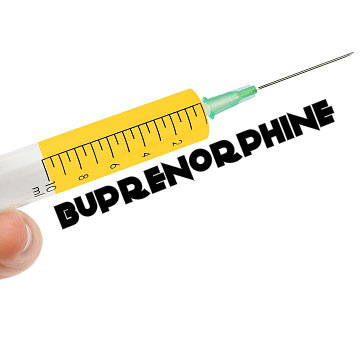 It might seem strange that a doctor would prescribe an opioid medication to help a person affected by opioid addiction; however, buprenorphine does not produce its effects as rapidly as heroin or other commonly abused opioids (or the opioid medication methadone); in addition, the medication has a relatively low maximum level of effect, and people who keep using it after reaching this level will not get any more “high.” In combination, these qualities make buprenorphine suitable as either a short-term or long-term option for people addicted to stronger opioids that enter treatment. Essentially, use of the medication makes it possible for recovering addicts to avoid uncontrolled substance intake while simultaneously avoiding the highly distressing symptoms of complete opioid withdrawal. One commonly used prescription product, called Subutex, contains only buprenorphine. Another commonly used product, called Suboxone, contains both buprenorphine and a second medication (naloxone) that effectively decreases the risks for buprenorphine abuse.
It might seem strange that a doctor would prescribe an opioid medication to help a person affected by opioid addiction; however, buprenorphine does not produce its effects as rapidly as heroin or other commonly abused opioids (or the opioid medication methadone); in addition, the medication has a relatively low maximum level of effect, and people who keep using it after reaching this level will not get any more “high.” In combination, these qualities make buprenorphine suitable as either a short-term or long-term option for people addicted to stronger opioids that enter treatment. Essentially, use of the medication makes it possible for recovering addicts to avoid uncontrolled substance intake while simultaneously avoiding the highly distressing symptoms of complete opioid withdrawal. One commonly used prescription product, called Subutex, contains only buprenorphine. Another commonly used product, called Suboxone, contains both buprenorphine and a second medication (naloxone) that effectively decreases the risks for buprenorphine abuse.
Effectiveness And Access Of Buprenorphine
Numerous studies have verified the effectiveness of buprenorphine and buprenorphine/naloxone as treatments for opioid addiction and opioid dependence (a state of physical reliance that does not include the dysfunctional symptoms of addiction). In addition, unlike methadone, which can only be administered to patients in a fairly small number of sanctioned clinics, any doctor who obtains a mandated ID number from the U.S. Drug Enforcement Agency can prescribe buprenorphine and buprenorphine/naloxone. This means that, theoretically, people affected by opioid addiction can get buprenorphine-based treatment in a far greater number of locations than they can gain access to methadone. Thousands of doctors across the U.S. have gone through the training needed to properly prescribe buprenorphine and buprenorphine/naloxone and have also registered with the DEA.
Awareness Among IV Opioid Users
In the study published in Substance Abuse, researchers from Johns Hopkins University, the City University of New York, the Albert Einstein College of Medicine, the Montefiore Medical Center and New York Harm Reduction Educators used an examination of 158 IV opioid users in New York City to assess how many such users know about buprenorphine as a treatment option for opioid addiction. All of these users were participants in a syringe exchange program. In addition to gauging basic awareness among these individuals, the researchers used interviews to determine how many people had received some form of buprenorphine and how many people displayed a willingness to try the medication or learn more about it. The researchers also looked for any connection between established familiarity with buprenorphine and the willingness to use the medication.
All told, the researchers found that most of the study participants (70 percent) had heard about buprenorphine as a possible treatment option. Roughly one-third of the participants (32 percent) had first-hand knowledge of someone who took buprenorphine, while another third (31 percent) had second-hand knowledge of someone who took the medication. Only 12 percent of all the individuals enrolled in the study had received buprenorphine themselves. When the researchers asked the 138 participants with no personal history of buprenorphine use if they were curious about using the medication, more than half of these individuals (57 percent) replied in the affirmative. Upon further investigation, the researchers concluded that curiosity about buprenorphine use was basically limited to those participants with second-hand knowledge of the medication.
The authors of the study published in Substance Abuse note that the opioid users enrolled in their project were among those that may be overlooked by programs offering treatment for opioid addiction. Even still, most of these individuals knew about the medication and many showed a willingness to learn more about it or possibly use it as a treatment option. The study’s authors believe that public health officials should explore the interest shown by those IV opioid users with second-hand knowledge of buprenorphine as a potential inroad for eventually making active treatment with the medication more widespread.
Read More About Successful Buprenorphine/Naloxone Treatment For Opioid Addiction


